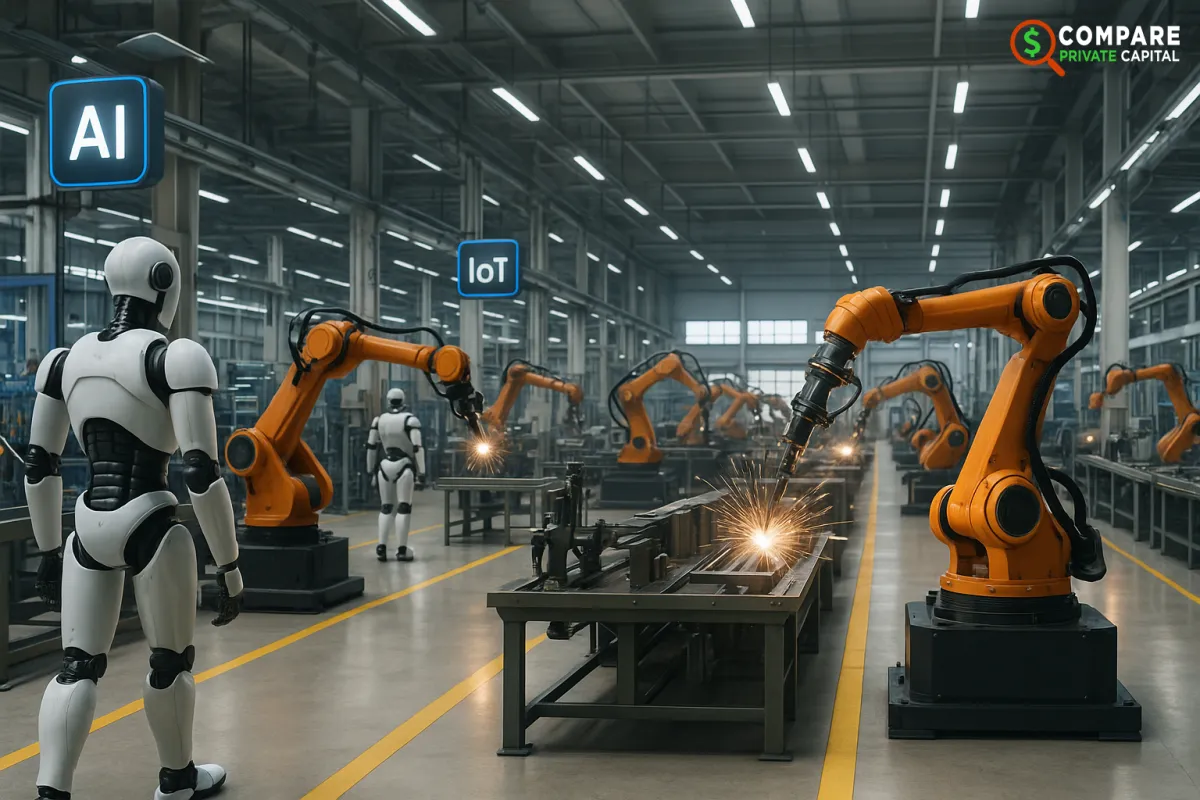
AI in MFG
AI in Manufacturing: Why Executives Need to Act Today to Stay Relevant Tomorrow
Manufacturing leaders are being asked to do more with less: reduce downtime, improve efficiency, and future-proof operations. For many executives, that directive now comes with a buzzword attached—AI. You’ve likely been told it’s time to implement “smart equipment” and data-driven automation on the production floor. But if you’re unsure where to start, you’re not alone.
The good news: today’s AI-enabled systems are built to be adaptable. They don’t require a total reinvention of your plant. Instead, they are designed to integrate across platforms, equipment, and legacy systems so that your investments in infrastructure remain relevant while your capabilities advance.

From Data to Decisions
Every manufacturing line produces mountains of data—machine health, energy consumption, defect rates, throughput per shift. AI turns that raw data into actionable insights:
Predictive maintenance that prevents costly downtime.
Dynamic scheduling that adjusts to real-time demand.
Quality control powered by computer vision systems.
These capabilities allow executives to shift from reactive firefighting to proactive leadership.
Why Hesitation is Riskier than Action
The question isn’t whether AI and automation will reshape manufacturing—it’s how quickly your competitors will put them to work. Those who delay risk:
Losing market share to more agile producers.
Missing opportunities to reduce operating costs.
Struggling to recruit younger talent drawn to modern, tech-enabled workplaces.
Inaction is, in itself, a decision. And in manufacturing, where margins are thin and speed is everything, it may be the costliest one.
Future-Shaping Questions for Executives
As you evaluate where to begin, consider:
How will AI help us anticipate disruptions in supply chains?
Which production processes could benefit from predictive maintenance or automated quality checks?
What customer demands—speed, customization, sustainability—can be met faster with smart automation?
How can AI free up our workforce to focus on innovation rather than routine monitoring?
The Path Forward
You don’t need a “big bang” overhaul. Most manufacturers start with pilot programs: deploying AI to one line, one machine type, or one process, then scaling based on ROI. Integration partners now design solutions that “plug in” to your existing systems, whether you run legacy ERP, PLCs, or cloud-based MES.
The takeaway is clear: executives must act today to stay relevant tomorrow. Smart equipment powered by AI isn’t about replacing your workforce—it’s about equipping them with sharper tools, faster insights, and safer processes.
👉 If you’re an operations executive, the question isn’t “Should we adopt AI?” but “Where will we begin?”